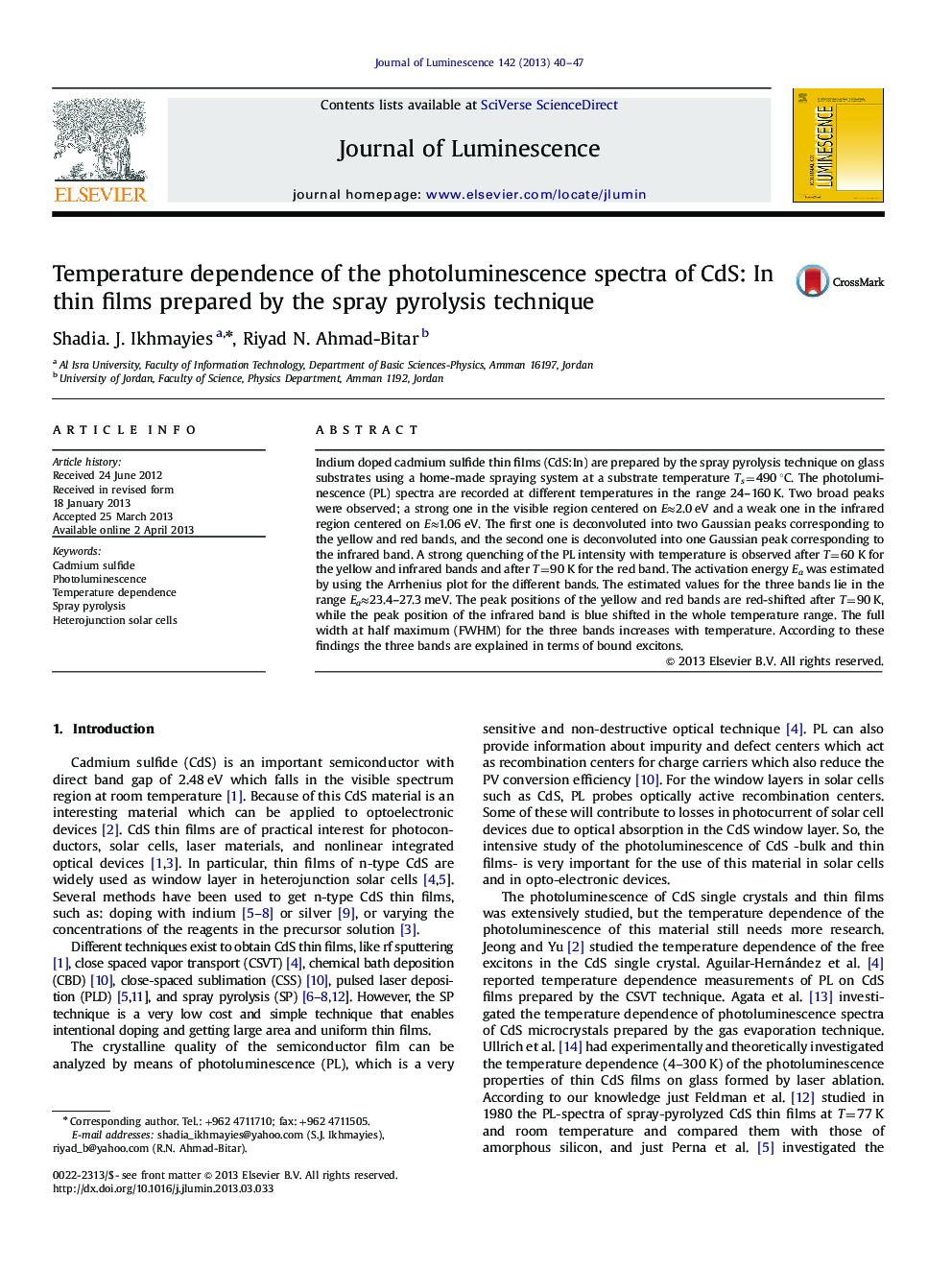| Article ID | Journal | Published Year | Pages | File Type |
|---|---|---|---|---|
| 5400089 | Journal of Luminescence | 2013 | 8 Pages |
Abstract
Indium doped cadmium sulfide thin films (CdS:In) are prepared by the spray pyrolysis technique on glass substrates using a home-made spraying system at a substrate temperature Ts=490 °C. The photoluminescence (PL) spectra are recorded at different temperatures in the range 24-160 K. Two broad peaks were observed; a strong one in the visible region centered on Eâ2.0 eV and a weak one in the infrared region centered on Eâ1.06 eV. The first one is deconvoluted into two Gaussian peaks corresponding to the yellow and red bands, and the second one is deconvoluted into one Gaussian peak corresponding to the infrared band. A strong quenching of the PL intensity with temperature is observed after T=60 K for the yellow and infrared bands and after T=90 K for the red band. The activation energy Ea was estimated by using the Arrhenius plot for the different bands. The estimated values for the three bands lie in the range Eaâ23.4-27.3 meV. The peak positions of the yellow and red bands are red-shifted after T=90 K, while the peak position of the infrared band is blue shifted in the whole temperature range. The full width at half maximum (FWHM) for the three bands increases with temperature. According to these findings the three bands are explained in terms of bound excitons.
Keywords
Related Topics
Physical Sciences and Engineering
Chemistry
Physical and Theoretical Chemistry
Authors
Shadia. J. Ikhmayies, Riyad N. Ahmad-Bitar,
